Discover 50 hidden attractions, cool sights, and unusual things to do in Croatia. Don't miss out on these must-see attractions: Diocletian's Palace (Split), Museum of Broken Relationships (Zagreb) or Stradun Street (Dubrovnik).
Below, you can find the list of the most amazing places you should visit in Croatia.
Table of Contents
Diocletian's Palace, Split

Also known as: Dioklecijanova palača
Enormous palace of a Roman emperor. Diocletian's Palace is an ancient palace built for the Roman emperor Diocletian at the turn of the fourth century AD, which today forms about half the old town of Split, Croatia. While it is referred to as a "palace" because of its intended use as the retirement residence of Diocletian, the term can be misleading as the structure is massive and more resembles a large fortress: about half of it was for Diocletian's personal use, and the rest housed the military garrison.
The complex was built on a peninsula six kilometres southwest from Salona, the former capital of Dalmatia, one of the largest cities of the late empire with 60,000 people and the birthplace of Diocletian. The terrain around Salona slopes gently seaward and is typical karst, consisting of low limestone ridges running east to west with marl in the clefts between them. Today the remains of the palace are part of the historic core of Split, which in 1979 was listed by UNESCO as a World Heritage Site.[1]
Address: Dioklecijanova ul. 1, 21000 Split
Museum of Broken Relationships, Zagreb
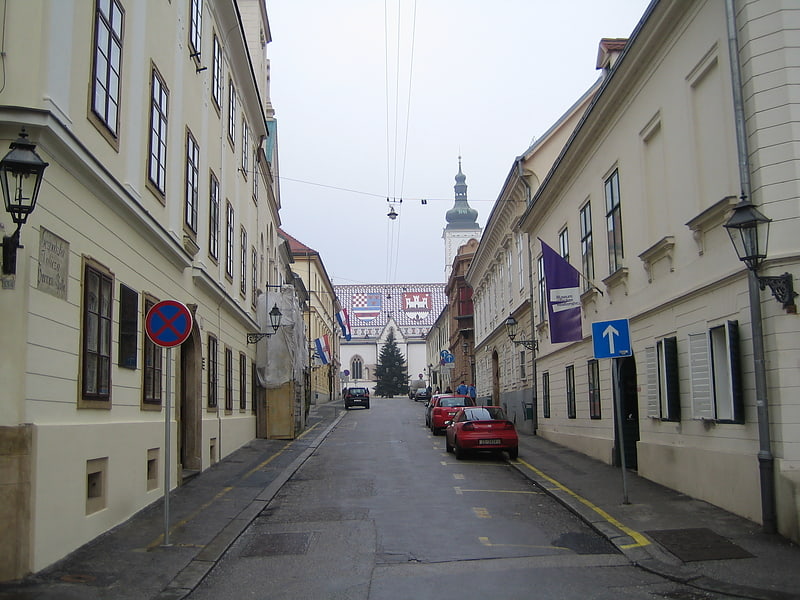
Also known as: Muzej prekinutih veza
Exhibits devoted to failed love affairs. The Museum of Broken Relationships is a museum in Zagreb, Croatia, dedicated to failed love relationships. Its exhibits include personal objects left over from former lovers, accompanied by brief descriptions.
The "museum" began as a traveling collection of donated items. Since then, it has found a permanent location in Zagreb. It received the Kenneth Hudson Award for Europe's most innovative museum in 2011.
In 2017, the museum saw more than 100,000 visitors, making it the 11th most visited museum in Croatia.[2]
Address: Ćirilometodska ul. 2, 10000 Zagreb (Grad Zagreb)
Stradun Street, Dubrovnik

Also known as: Placa
Street. Stradun or Placa is the main street of Dubrovnik, Croatia. The limestone-paved pedestrian street runs some 300 metres through the Old Town, the historic part of the city surrounded by the Walls of Dubrovnik.
The site of the present-day street used to be a marshy channel which separated Ragusa from the forest settlement of Dubrava before it was reclaimed in the 13th century. Stradun stretches through the walled town in the east-west direction, connecting the western entrance called the "Pile Gate" (Vrata od Pila) to the "Ploče Gate" (Vrata od Ploča) on the eastern end. Both ends are also marked with 15th-century fountains (the so-called Large Onofrio's Fountain in the western section and the Small Onofrio's Fountain on the east end) and bell towers (the Dubrovnik Bell Tower to the east end and the bell tower attached to the Franciscan monastery to the west).
Stradun became the city's main thoroughfare in the 13th century, and its current appearance was for the most part created following the devastating 1667 earthquake in which most of the buildings in Ragusa (as Dubrovnik was then called) were destroyed. Before the earthquake the houses which line the street were not so uniformly designed as they appear today, with many of them featuring arcades and elaborate decorations. Following the 1667 earthquake and a large fire which broke out immediately afterwards, the Republic of Ragusa passed a law which specified the layout of all future residential buildings constructed in the city.
Because of this all of the 17th-century houses lining the Stradun share the same pattern - the ground level always housed a shop with a street entrance featuring a door and a window in a single frame under a semicircular arch (during the day the door would be kept closed and goods would be handed to customers over the sill, thereby serving as a counter), and a storage room in the back with a separate alley entrance. The first floor was reserved for the living area and the second floor had various rooms, while the kitchen was invariably located in the loft above the second floor, to prevent the spread of potential fires.
In recent times, the Stradun and some of the surrounding houses were damaged in mortar shelling during the Siege of Dubrovnik in 1991–92, but most of the damage has since been repaired.
Many of the historic buildings and monuments in Dubrovnik are situated along the Stradun, because of which it serves as a popular esplanade for tourists. A procession for the Feast of Saint Blaise, the patron saint of Dubrovnik, passes through Stradun every year on 3 February. Occasional concerts are also held at Stradun and it is regularly used as the site of New Year's Eve celebrations.
On 8 July 2010 Stradun was also site of a fund-raising exhibition tennis match played by Goran Ivanišević and John McEnroe in front of an audience of 600 and televised live in 10 countries.[3]
Fort Lovrijenac, Dubrovnik
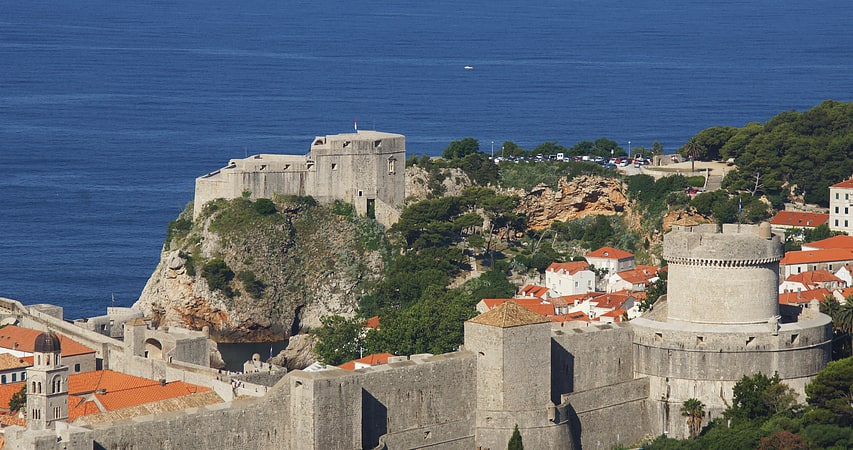
Also known as: Lovrijenac
Theater in Dubrovnik, Croatia. Fort Lovrijenac or St. Lawrence Fortress, often called "Dubrovnik's Gibraltar", is a fortress and theater outside the western wall of the city of Dubrovnik in Croatia, 37 metres above sea level. Famous for its plays and importance in resisting Venetian rule, it overshadows the two entrances to the city, from the sea, and by land. Early in the 11th century, the Venetians attempted to build a fort on the same spot where Fort Lovrijenac currently stands. If they had succeeded, they would have kept Dubrovnik under their power, but the people of the city beat them to it. The "Chronicles of Ragusa" reveal how the fort was built within just three months and from then on constantly reconstructed. When the Venetian ships arrived, full of materials for the construction of the fort, they were told to return to Venice. The Croatian leg of the Red Bull Cliff Diving World Series takes place in Lovrijenac.[4]
Address: Ul. od Tabakarije 29, 20000 Dubrovnik
Cathedral of Saint Domnius, Split
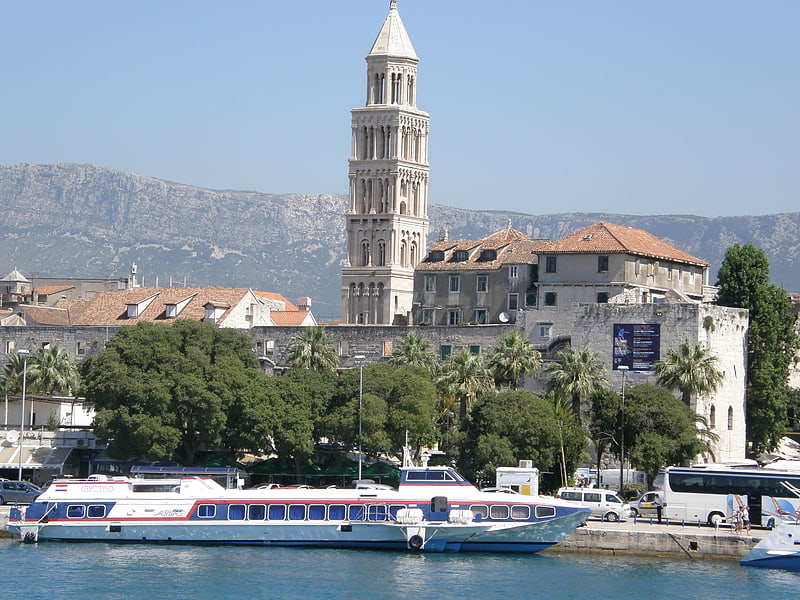
Also known as: Splitska katedrala
Historic 4th-century Catholic church. The Cathedral of Saint Domnius, known locally as the Sveti Dujam or colloquially Sveti Duje, is the Catholic cathedral in Split, Croatia. The cathedral is the seat of the Archdiocese of Split-Makarska, headed by Archbishop Marin Barišić. The Cathedral of St. Domnius is a complex of a church, formed from an Imperial Roman mausoleum, with a bell tower; strictly the church is dedicated to the Virgin Mary, and the bell tower to Saint Domnius. Together they form the Cathedral of St. Domnius.
The Cathedral of Saint Domnius, consecrated at the turn of the 7th century AD, is regarded as the oldest Catholic cathedral in the world that remains in use in its original structure, without near-complete renovation at a later date (though the bell tower dates from the 12th century). The structure itself, built in AD 305 as the Mausoleum of Diocletian, is the second oldest structure used by any Christian Cathedral.[5]
Address: Kraj Sv.Duje 5, 21000 Split
Zagreb Zoo, Zagreb

Also known as: Zoološki vrt grada Zagreba
Large place with many species and feedings. Zagreb Zoo is a 7-hectare zoo located within Maksimir Park in Zagreb, Croatia and is across the street from Zagreb's Maksimir Stadium. It is one of three zoo parks in the country.
Zagreb Zoo is a member of both the European and the World Association of Zoos and Aquariums and is a participant in the European Endangered Species Programme.[6]
Address: Maksimirski perivoj, 10000 Zagreb (Grad Zagreb)
Nikola Tesla Technical Museum, Zagreb
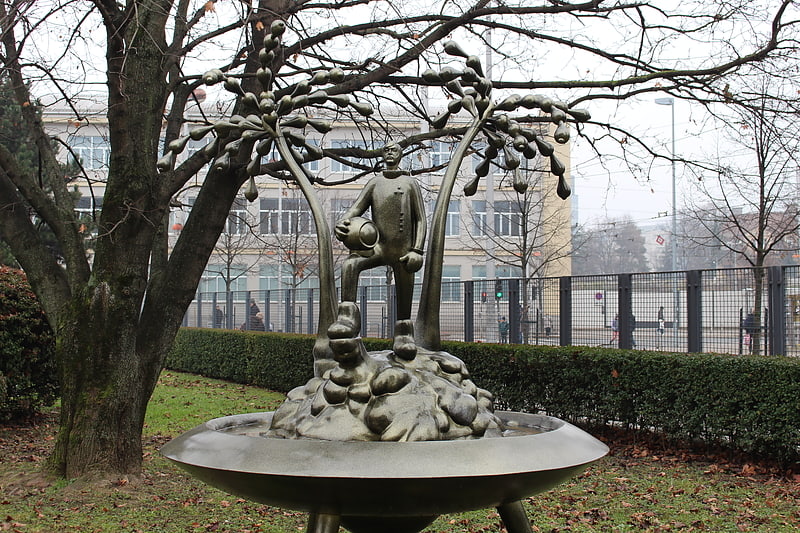
Also known as: Tehnički muzej Nikola Tesla
Museum exploring science and technology. The Nikola Tesla Technical Museum is a technology museum located in Zagreb, Croatia, which collects and showcases scientific and technical appliances used in the countryćs history. It exhibits numerous historic aircraft, cars, machinery and equipment.[7]
Address: Savska cesta 18, 10000 Zagreb (Grad Zagreb)
Amphitheater, Pula
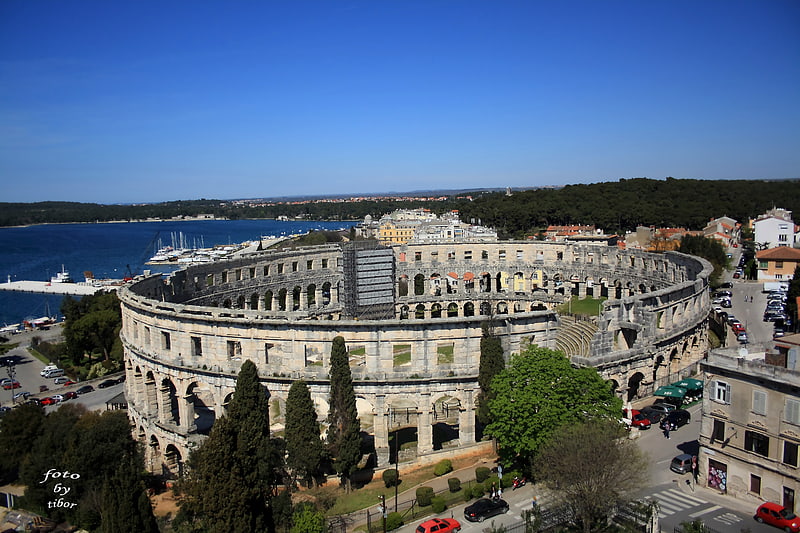
Also known as: Amfiteatar u Puli
Roman amphitheatre in Pula, Croatia. The Pula Arena is a Roman amphitheatre located in Pula, Croatia. It is the only remaining Roman amphitheatre to have four side towers entirely preserved. It was constructed between 27 BC and AD 68, and is among the world's six largest surviving Roman arenas. The arena is also the country's best-preserved ancient monument.
The amphitheatre is depicted on the reverse of the Croatian 10 kuna banknote, issued in 1993, 1995, 2001 and 2004.[8]
Address: Flavijevska ul., 52100 Pula
Walls of Dubrovnik, Dubrovnik
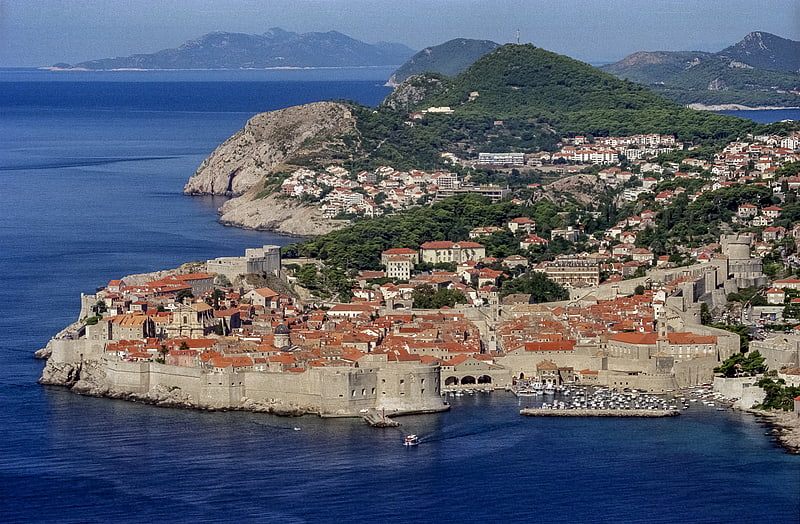
Also known as: Dubrovačke gradske zidine
Historical city walls with scenic views. The Walls of Dubrovnik are a series of defensive stone walls surrounding the city of Dubrovnik in southern Croatia. With numerous additions and modifications throughout their history, they have been considered to be amongst the great fortification systems of the Middle Ages, as they were never breached by a hostile army during this time period. In 1979, the old city of Dubrovnik, which includes a substantial portion of the old walls of Dubrovnik, joined the UNESCO list of World Heritage Sites.
The oldest systems of fortifications around the town were likely wooden palisades. Today's intact city walls, constructed mainly during the 12th–17th centuries, mostly a double line, have long been a source of pride for Dubrovnik. The walls run an uninterrupted course of approximately 1,940 metres (6,360 ft) in length, encircling most of the old city, and reach a maximum height of about 25 metres (82 ft). The bulk of the existing walls and fortifications were constructed during the 14th and 15th centuries, but were continually extended and strengthened up until the 17th century.
This complex structure, amongst the largest and most complete in Europe, protected the freedom and safety of the "civilised" and "sophisticated" Republic of Ragusa that flourished in peace and prosperity for some five centuries. The walls were reinforced by three circular and 14 quadrangular towers, five bastions (bulwarks), two angular fortifications and the large St. John's Fortress. Land walls were additionally reinforced by one larger bastion and nine smaller semicircular ones, like the casemate Fort Bokar, the oldest preserved fort of that kind in Europe. The moat that ran around the outside section of the city walls, which were armed by more than 120 cannons, provided superb city defense capabilities.[9]
Address: Placa - Stradun, 20000 Dubrovnik
2. Podrumi, Split

The Cellars of Diocletian's Palace, sometimes referred to as the "basement halls", is a set of substructures, located at the southern end of Diocletian's Palace, that once held up the private apartments of Emperor Diocletian and represent one of the best preserved ancient complexes of their kind in the world.[10]
Trogir Cathedral, Trogir

Also known as: Trogirska katedrala
13th-century basilica with a bell tower. The Cathedral of St. Lawrence is a Roman Catholic triple-naved basilica constructed in Romanesque-Gothic in Trogir, Croatia. Since its construction lasted several centuries, it illustrates all the styles that succeeded one another in Dalmatia. It serves now as the most imposing monument in the city of Trogir.[11]
Address: Trg Ivana Pavla II, 21220 Trogir
Šibenik Cathedral, Šibenik

Also known as: Katedrala sv. Jakova u Šibeniku
Gothic-Renaissance church made of stone. The Cathedral of St. James in Šibenik, Croatia is a triple-nave Catholic basilica with three apses and a dome. It is the episcopal seat of the Šibenik diocese. It is also the most important architectural monument of the Renaissance in the entire country. Since 2000, the cathedral has been on the UNESCO World Heritage List.
It is often known as "St. Jacob's", because Croatian, like many other languages, uses the same name for both "James" and "Jacob". It is dedicated to Saint James the Greater.[12]
Address: Trg Republike Hrvatske 1, 22000 Šibenik
Šupljara cave, Plitvice Lakes National Park
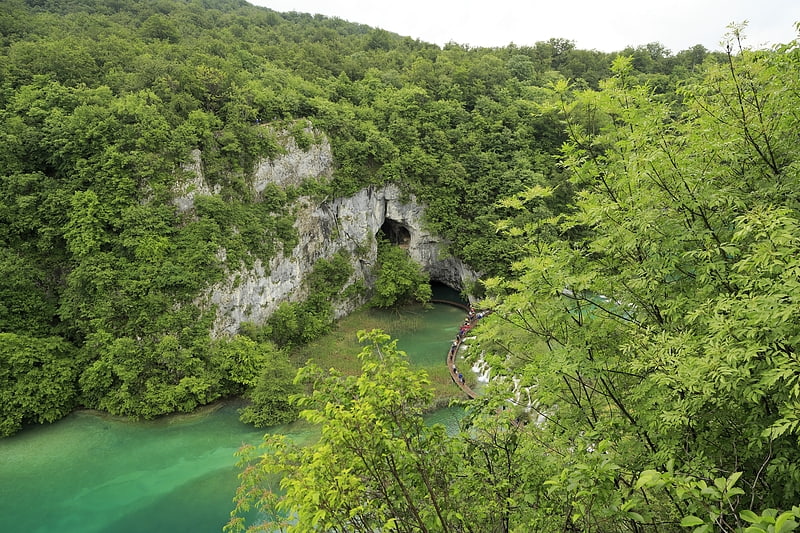
Natural attraction, Nature, Top attraction, Cave
Church of St. Donatus, Zadar

Also known as: Crkva sv. Donata u Zadru
Sizable pre-Romanesque Catholic church. The Church of St Donatus is a church located in Zadar, Croatia. Its name refers to Donatus of Zadar, who began construction on this church in the 9th century and ended it on the northeastern part of the Roman forum.
Originally named Church of the Holy Trinity, in the 15th century it was re-dedicated to St Donatus. The church is the largest Pre-Romanesque building in Croatia. It is also an example of the centralised type of the Carolingian period in Europe.[13]
Address: Trg Svete Stošije 3, 23000 Zadar
Greeting to the Sun, Zadar
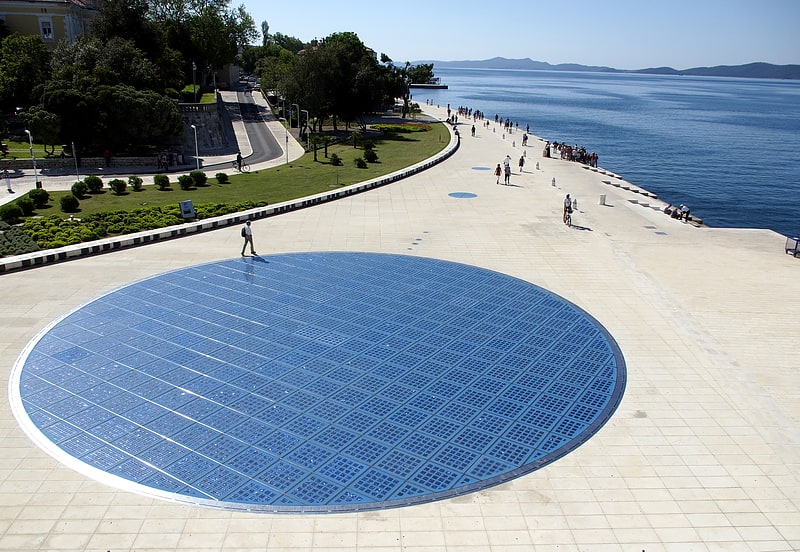
Also known as: Pozdrav Suncu
Tourist attraction in Croatia. Monument to the Sun or The Greeting to the Sun is a monument in Zadar, Croatia dedicated to the Sun. It consists of three hundred, multi-layered glass plates placed on the same level as the stone-paved waterfront. It consists of a 22-meter diameter circle, with photovoltaic solar modules underneath. Lighting elements installed in a circle turn on at night, and produce a light show. The monument, designed by Croatian architect Nikola Bašić, symbolizes communication with nature, communicates with light, while the nearby Sea organ communicates with sound.[14]
Address: Obala Petra Krešimira 4, 23000 Zadar
Church of St. Euphemia, Rovinj
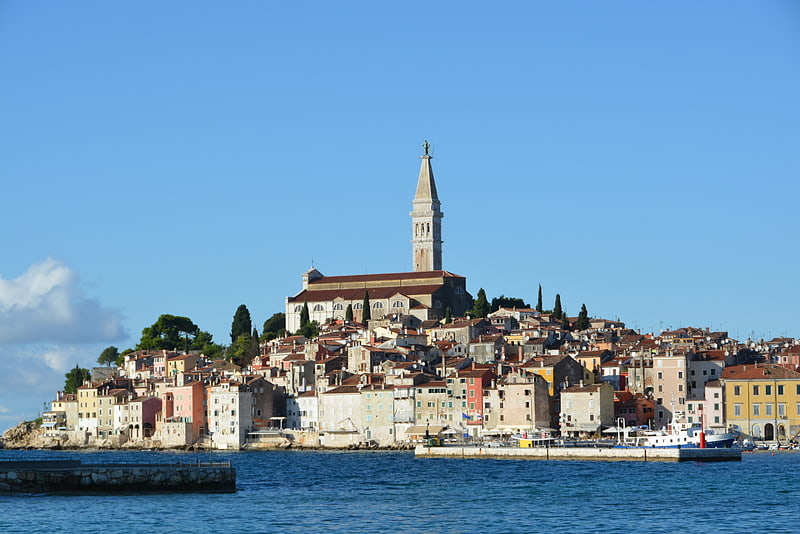
Also known as: Crkva sv. Eufemije u Rovinju
Historic church with a tower for views. The Church of St. Euphemia, often known as the Basilica of St. Euphemia, is a Baroque church located in the heart of the historic part of Rovinj, Croatia.
This three-nave church was built from 1725 to 1736, over the remains of older, early Christian structures. The dedication was originally to Saint George, later to Saints George and Euphemia; the present building is dedicated to Euphemia only. Its façade dates from 1883.
The relics of Saint Euphemia are preserved in a Roman sarcophagus from the sixth century (but adapted in the 15th century). The church contains several treasures and works of art: Gothic statues from the 15th century, paintings from the 16th and the 17th centuries: Last Supper and Christ in the Gethsemane.
The bell tower resembles the tower of St Mark's Basilica in Venice. It was built during 1654–1680, to the plans by Antonio Manopola. On top of this 60 m-high tower stands the statue of Saint Euphemia, serving as a wind vane.
The church is described by Alice Lee Moqué in Delightful Dalmatia:
"At first glance it is seen that the tower with its golden angel is almost an exact copy of the campanile in Venice, only this angel is Saint Eufemia, the little town's patron saint...whose marvelous experiences are plainly depicted upon the walls of the chapel."[15]
Address: Trg Sv. Eufemije, 52210 Rovinj
Euphrasian Basilica, Poreč

Also known as: Eufrazijeva bazilika
6th-century Episcopal basilica complex. The Euphrasian Basilica or the Cathedral Basilica of the Assumption of Mary is a Roman Catholic basilica in the Istrian town of Poreč, Croatia. The episcopal complex, which comprises the basilica itself, a sacristy, a baptistery and the bell tower of the nearby archbishop's palace, is an excellent example of early Byzantine architecture in the Mediterranean region.
The Euphrasian basilica has for the most part retained its original shape, but accidents, fires and earthquakes have altered a few details. Since it is the third church to be built on the same site, it conceals previous buildings, for example the great floor mosaic of the previous basilica from the 5th century. Because of its exceptional value, it has been inscribed on the UNESCO World Heritage List since 1997. The Basilica is also the Cathedral of the Roman Catholic Diocese of Poreč-Pula.[16]
Address: Eufrazijeva ul., 52440 Poreč
Sea organ, Zadar
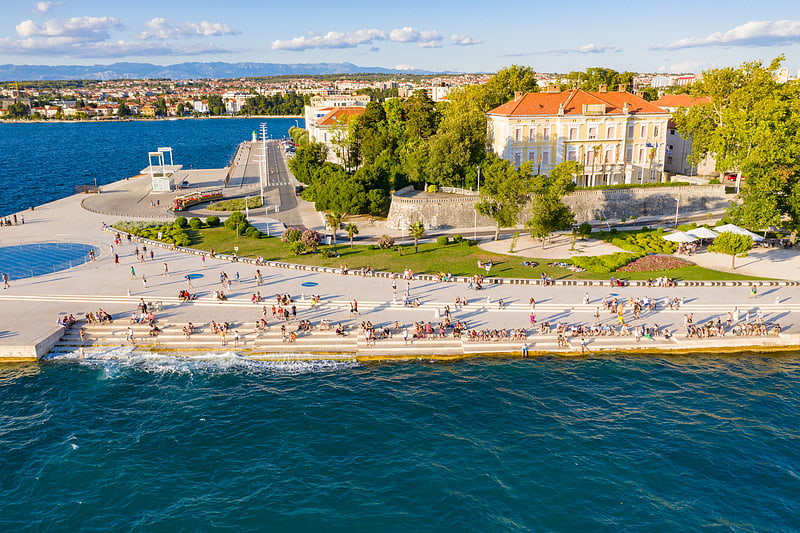
Also known as: Morske orgulje
Tourist attraction in Croatia. The Sea organ is an architectural sound art object located in Zadar, Croatia and an experimental musical instrument, which plays music by way of sea waves and tubes located underneath a set of large marble steps.[17]
Address: Obala Petra Krešimira IV, 23000 Zadar
Baredine Cave, Poreč
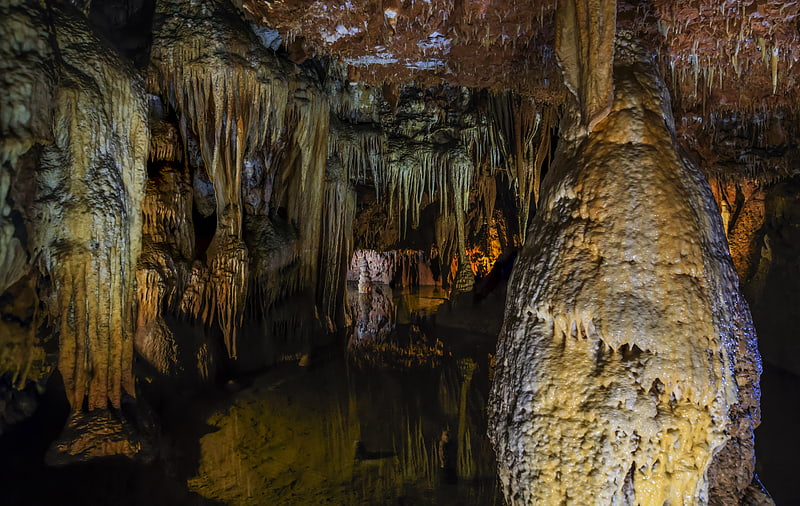
Also known as: Baredine
Tourist attraction in Gedići, Croatia. Baredine Cave is a geomorphologic monument of nature and the first speleologic locality and tourist cave in Istria opened for visits since 1995.
It is situated in western part of Istria 6 km north-east from Poreč, Croatia.[18]
Address: Gedici 55, 52446 Poreč
Pula Cathedral, Pula
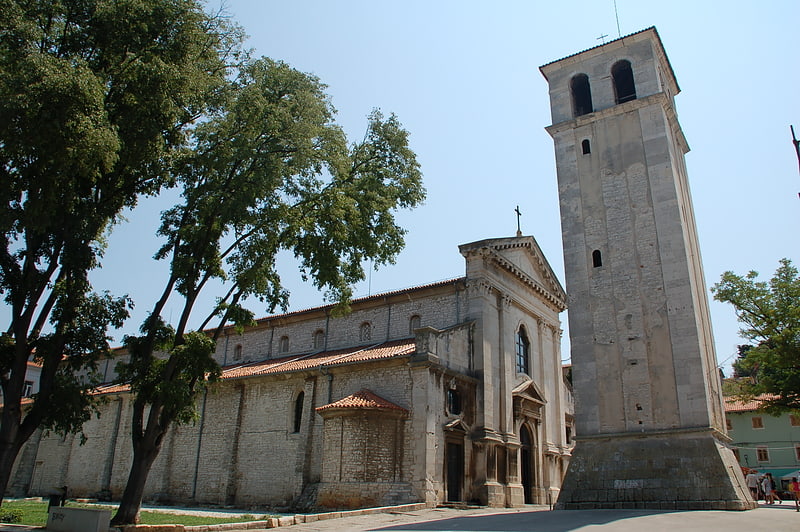
Also known as: Katedrala u Puli
Cathedral. The Pula Cathedral or fully the Cathedral of the Assumption of the Blessed Virgin Mary is a co-cathedral in Pula, Croatia. Along with the Euphrasian Basilica it is one of the two official seats of the Roman Catholic Diocese of Poreč and Pula. The church is located on the south side of the Pula bay at the foot of the hill with the 17th century Venetian fort. The site of the present-day church has been used for religious worship since ancient Roman times and the first Christian churches on the site were built in the late 4th and early 5th century AD. These had gone through a series of enlargements and reconstructions over the ages.[19]
Temple of Augustus, Pula
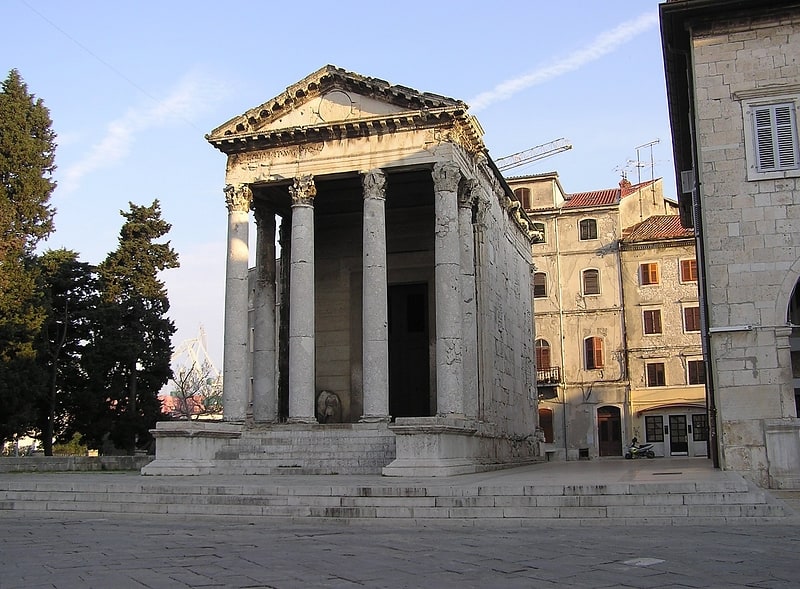
Also known as: Augustov hram
Public square with stunning Roman temple. The Temple of Augustus is a well-preserved Roman temple in the city of Pula, Croatia. Dedicated to the first Roman emperor, Augustus, it was probably built during the emperor's lifetime at some point between 27 BC and his death in AD 14. It was built on a podium with a tetrastyle prostyle porch of Corinthian columns and measures about 8 by 17.3 m, and 14 m high. The richly decorated frieze is similar to that of a somewhat larger and more recent temple, the Maison Carrée in Nîmes, France. These two temples are considered the two best complete Roman monuments outside Italy.[20]
Address: Forum Ulica, Pula
St. Nicholas Fortress, Šibenik
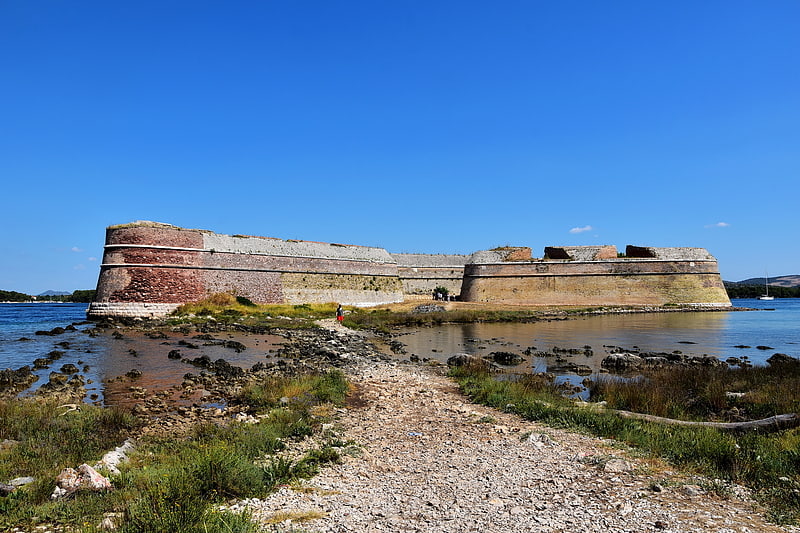
Also known as: Utvrda sv. Nikole
Fortress in Šibenik, Croatia. St. Nicholas Fortress is a fortress located at the entrance to St. Anthony Channel, near the town of Šibenik in central Dalmatia, Croatia.
It was included in UNESCO's World Heritage Site list as part of "Venetian Works of Defence between 16th and 17th centuries: Stato da Terra – western Stato da mar" in 2017.
After reconstruction work that lasted for two years, the fortress was open to visitors in July 2019.[21]
Address: Šibenski Kanal, Šibenik
Kamerlengo Castle, Trogir
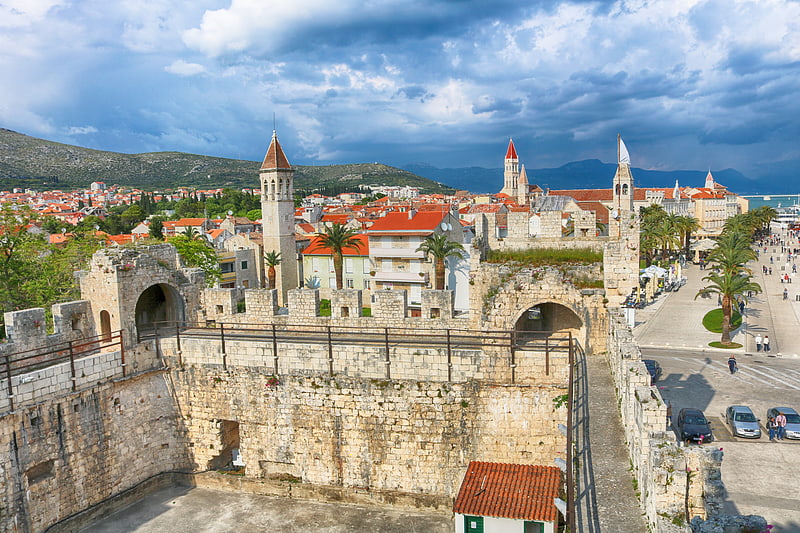
Also known as: Kaštel Kamerlengo
Historic fortress with scenic views. Kamerlengo is a castle and fortress in Trogir, Croatia.[22]
Address: Trogir Riva, 21220 Trogir
Trsat Castle, Rijeka
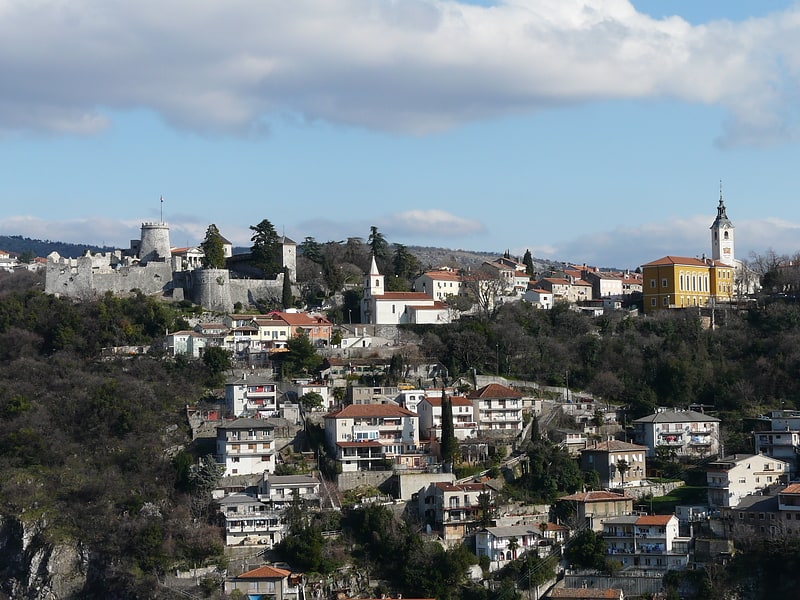
Historical landmark in Rijeka, Croatia. Trsat Castle is a castle in Trsat, Croatia. It is thought that the castle lies at the exact spot of an ancient Illyrian and Roman fortress. The Croatian noble Vuk Krsto Frankopan is buried in one of the churches. The Trsat castle was completely reconstructed and renovated in the 19th century when the mausoleum of the military commander Laval Nugent was built in its interior. The courtyard of the castle has now been turned into a restaurant and many tourists visit the place during the summer months.[23]
Address: Petra Zrinskog bb, 51000 Rijeka
Tvrđava sv. Mihovila, Šibenik
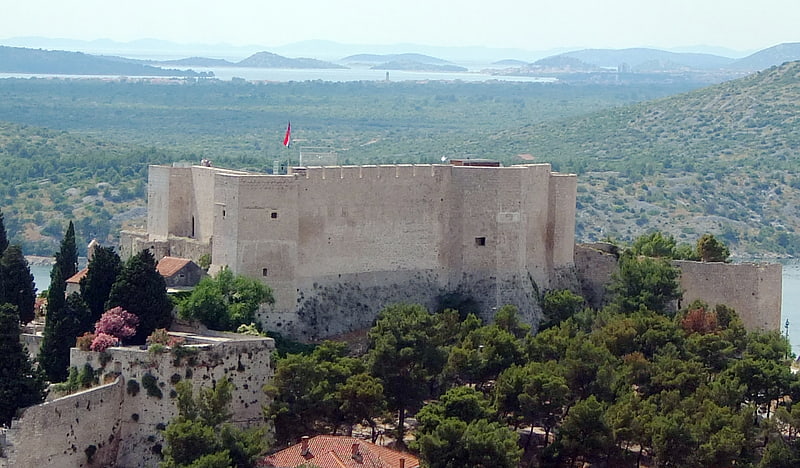
Fortress in Šibenik, Croatia. St. Michael's Fortress is a medieval fort in Šibenik, Šibenik-Knin County, Croatia, situated on a steep hill above the old historic center of the city. Its strategically favorable and dominant position made it the central part of Šibenik fortification system. The location was more or less continuously occupied since the Iron Age, as is witnessed by numerous archaeological findings from the era. The city of Šibenik was first mentioned on 25 December 1066 in a charter signed by King Peter Krešimir IV and verified by his courtiers. It is widely considered that the signing took place at St. Michael's Fortress.[24]
Address: Put groblja 4, 22000 Šibenik
Beach Villas Rubin, Rovinj
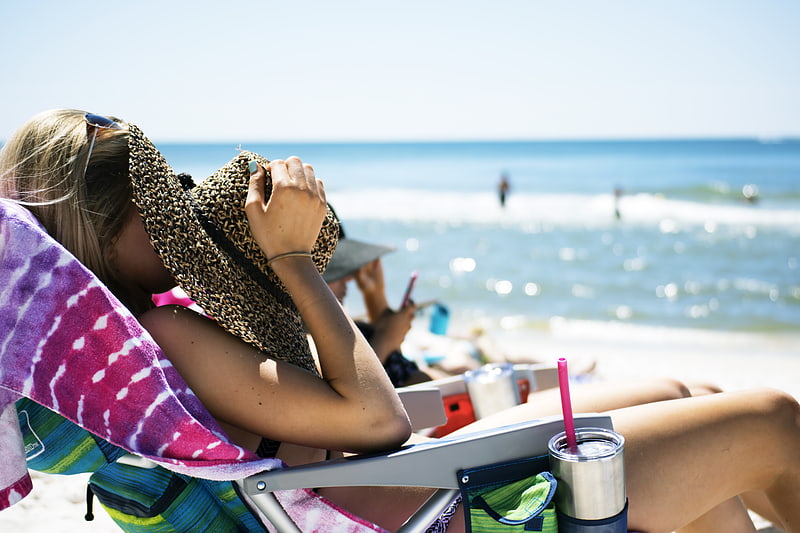
Beach, Cocktail
Address: Polari b.b., Rovinj
Pantana, Trogir
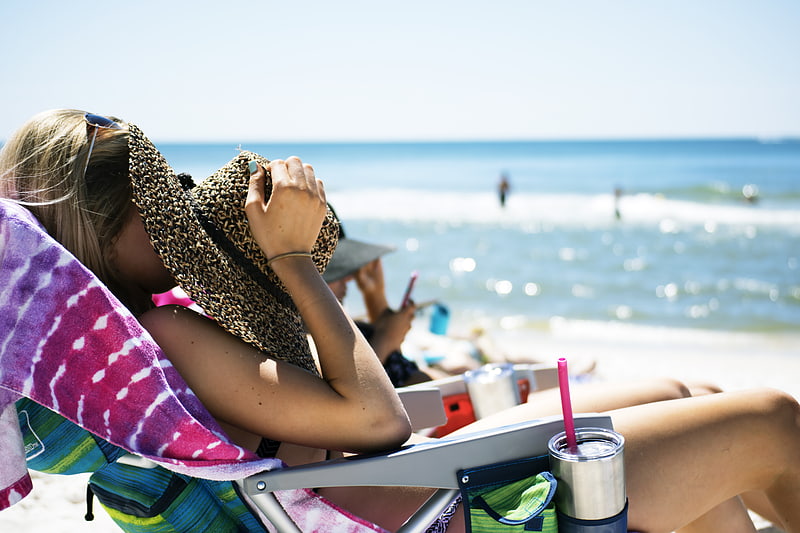
Beach
Address: Kneza Trpimira, Trogir
Monkodonja, Rovinj
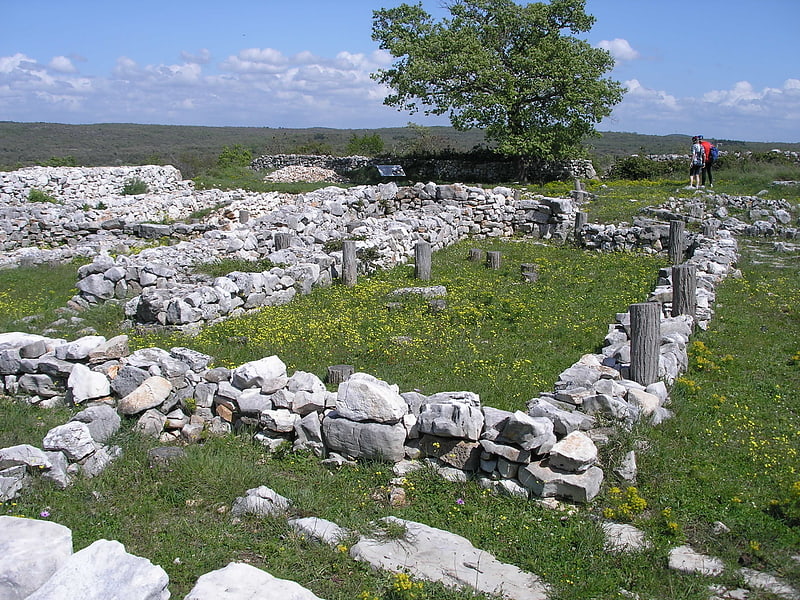
Monkodonja is a hill fort occupied about 1800–1200 BC during the Bronze Age, located near the city of Rovinj in the Croatian region of Istria.[25]
Biserujka, Krk
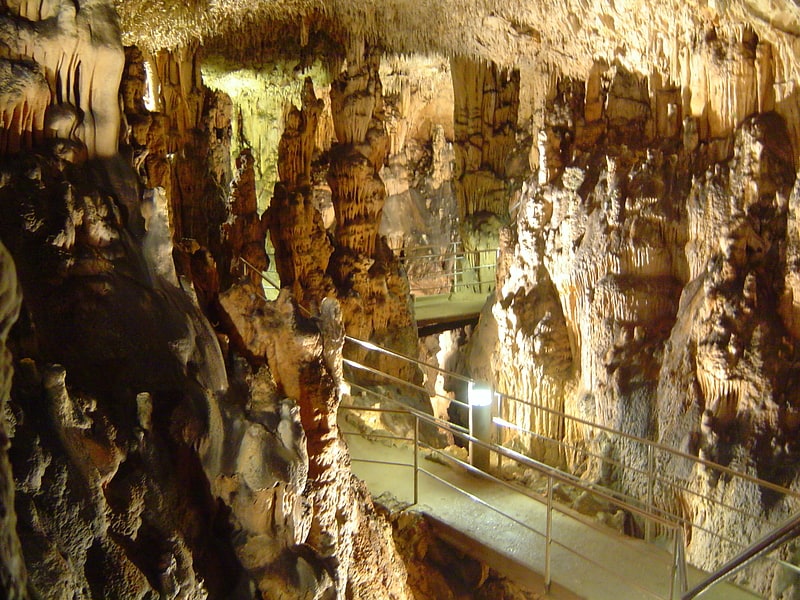
Underground cave with a great hall. Biserujka is a cave located 6 km northeast of Dobrinj, in the village of Rudine, above Slivanjska Bay, in the island of Krk, Croatia.
An undistinguished stone house in the middle of a bare karst landscape hides the entrance to a cave 12 m under the surface. Although it is not very long if compared to other caves, only 110 m deep, the Biserujka cave has everything that is characteristic of karst phenomena. It has typical features such as stalactites and stalagmites, and also a gallery or hall, which is suitable for the holding of concerts. However, because of the low temperature, about 13 °C, people cannot stand being there for long periods of time, so only short musical pieces are performed. Since 1998, the cave has been arranged for sightseeing and the hosts can take groups of 25 at a time.[26]
Address: 5 Rudine, Krk
Church of St. Nicholas, Rijeka

Also known as: Crkva sv. Nikole u Rijeci
Church in Rijeka, Croatia. The Church of St. Nicholas is a Serbian Orthodox church in Rijeka, Croatia. The church is dedicated to Saint Nicholas. The building of the church was completed in 1790.[27]
Address: Ignazia Henckea, Rijeka
Ivan Zajc Croatian National Theatre, Rijeka
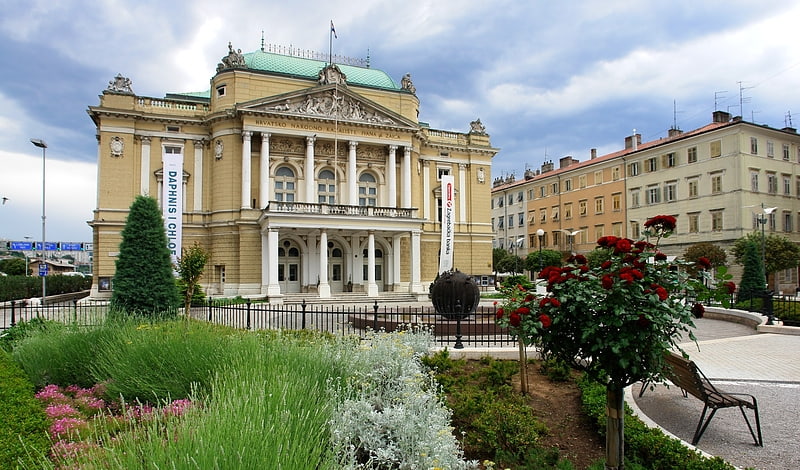
Also known as: Hrvatsko narodno kazalište Ivana pl. Zajca u Rijeci
Theatre in Rijeka, Croatia. The Croatian National Theatre Ivan pl. Zajc in Rijeka, commonly referred to as HNK Zajc, is a theatre, opera and ballet house located in Rijeka.[28]
Porec Zelena Laguna, Poreč
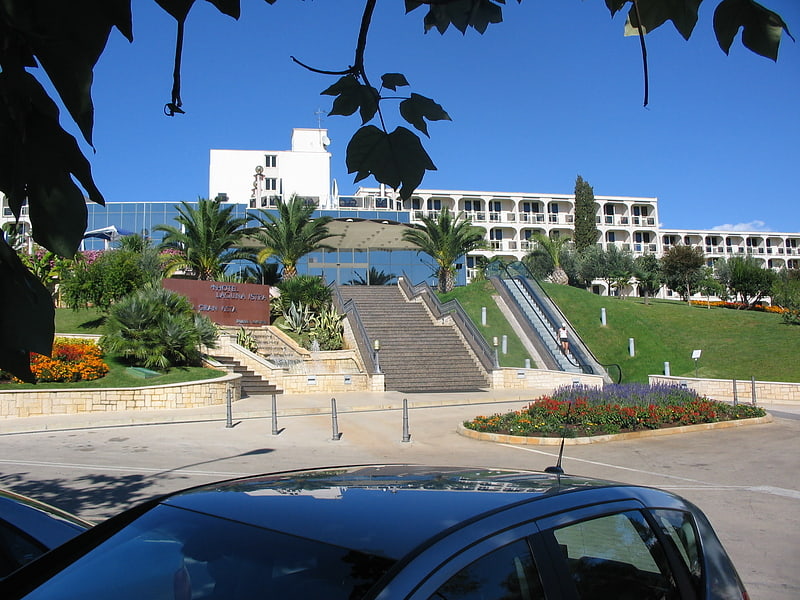
Church of Saints Philip and James, Vukovar
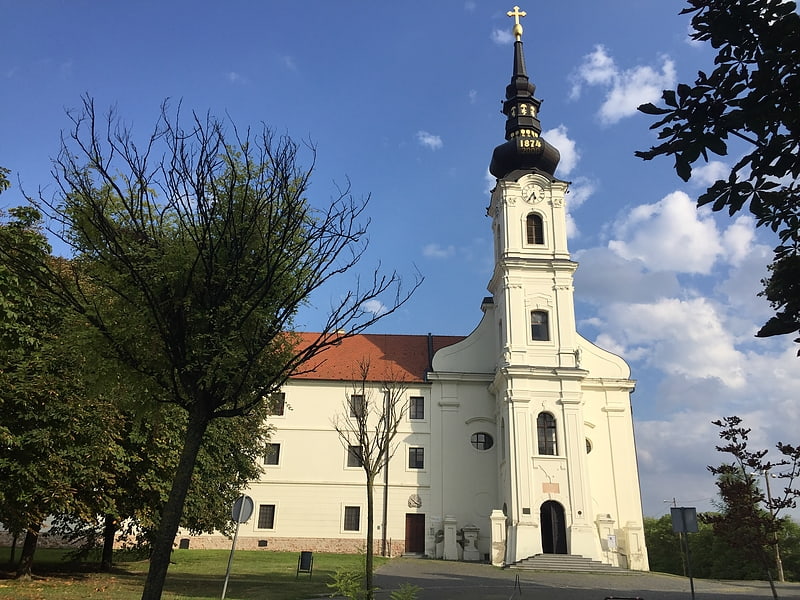
The Church of Saints Philip and James is a Roman Catholic church in Vukovar, Croatia.[29]
Mala Kapela, Plitvice Lakes National Park
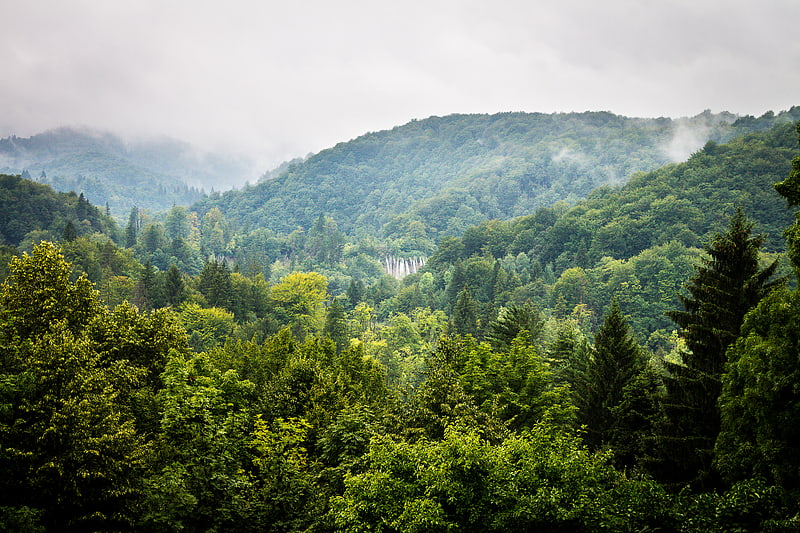
Mountain in Croatia. Mala Kapela is a mountain range in Croatia, part of the Dinaric Alps. It stretches in the direction northwest–southeast, and it extends from the mountain pass called "Kapela" or "Vrh Kapele", that separates it from Velika Kapela, down to the mountain pass that connects Otočac and Plitvice and from then on to Plješevica. The highest peak is Seliški vrh at 1279 meters, located in the southern part of the mountain. The Mala Kapela Tunnel goes through the northern section of the mountain.[30]
Plaža Tomaševac, Opatija
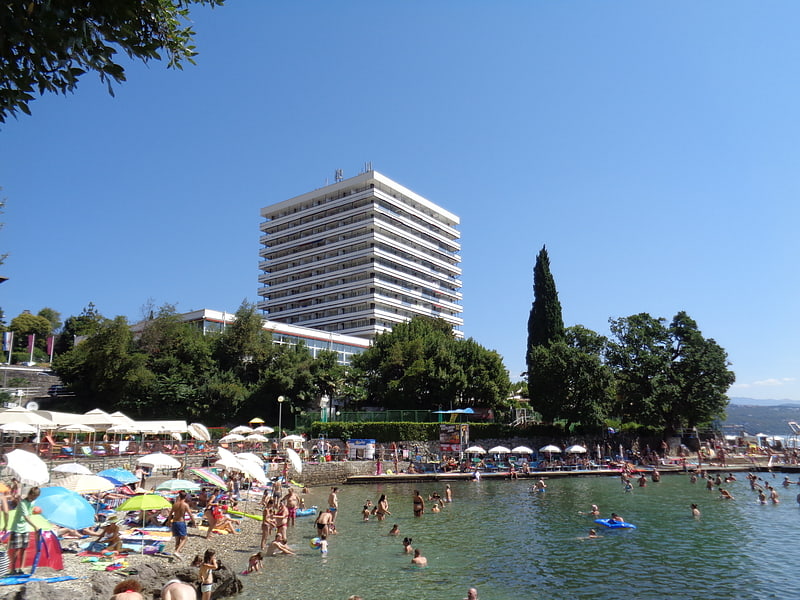
Beach
Zoo, Osijek

Zoo in Croatia. Osijek Zoo and Aquarium is an 11-hectare zoo in Osijek, Croatia. It is located on the banks of the Drava river opposite the city of Osijek, and is the biggest Zoo in Croatia.
Director of the zoo is Denis Vedlin.[31]
Address: Sjevernodravska obala bb, 31000 Osijek
Tvrđa, Osijek
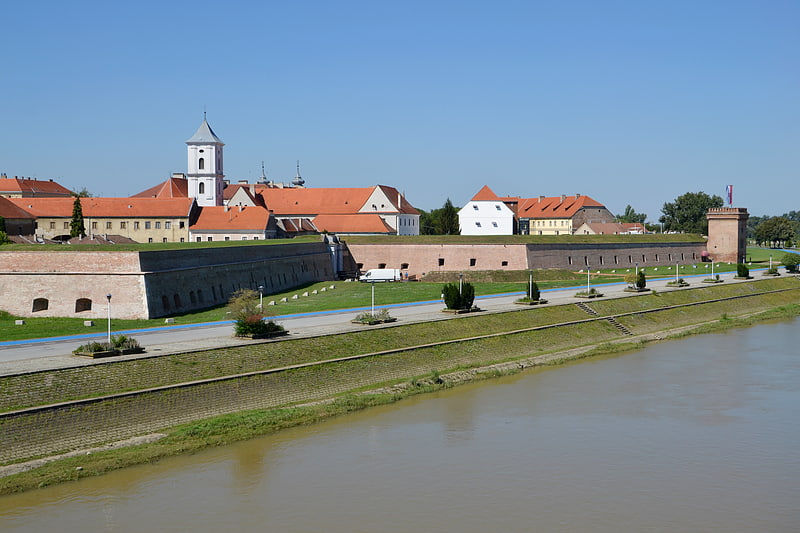
Tvrđa is the old town of the city of Osijek in Croatia. It is the best-preserved and largest ensemble of Baroque buildings in Croatia and consists of a Habsburg star fort built on the right bank of the River Drava. Tvrđa has been described by the World Monuments Fund as "a unique example of an eighteenth-century baroque military, administrative, and commercial urban center".
The star fort was constructed in the immediate vicinity of medieval Osijek after the defeat of the Ottoman forces in 1687, due to Osijek's strategic importance. Constructed starting in 1712 to plans by Mathias von Kaiserfeld and then Maximilian Gosseau de Henef, all five planned bastions and two gates were complete by 1715. By 1735, the inner town was finished and three northern bastions had been added. When complete, it was the largest and most advanced Habsburg fortress on the border with the Ottoman Empire, consisting of eight bastions and featuring armories, depots, a garrison headquarters, military court, construction office, a garrison physician, guardhouse, officers' apartments, a military hospital and seven barracks. The completed fort was entirely surrounded with walls and palisades and had four main gates at each side (north, south, east, west). Tvrđa had street lights by 1717 and was the site of the first public water supply in Croatia, opened in 1751.
Tvrđa's military importance decreased after the Berlin Congress of 1878, with the increasing stability of the surrounding region. Most of the fort walls and fortifications were destroyed in the 1920s due to the obstacle they presented to the development of Osijek. While the fortifications have largely been removed, the fort's interior core remains intact and is now home to churches, museums, schools and other public buildings, as well as numerous bars and restaurants. Of the fortification system, only the northern side of the walls now remain intact, as well as parts of the first and eighth bastions along with the northern gate known as the 'water gate' ('vodena vrata'). Tvrđa sustained significant damage during the Croatian War of Independence during the 1990s and was featured on the 1996 World Monuments Watch List of Most Endangered Sites. It now features on Croatia's 'tentative list' for consideration as a nominee for a World Heritage Site.[32]
Frankopan Castle, Krk

Castle in Krk, Croatia. Frankopan Castle is a castle located on the southwest coast of the island Krk, in the ancient town of Krk, which is one of the oldest towns in the Adriatic, in Croatia.[33]
Address: Kamplin Square, 51500 Krk
Tvrdalj Castle, Stari Grad
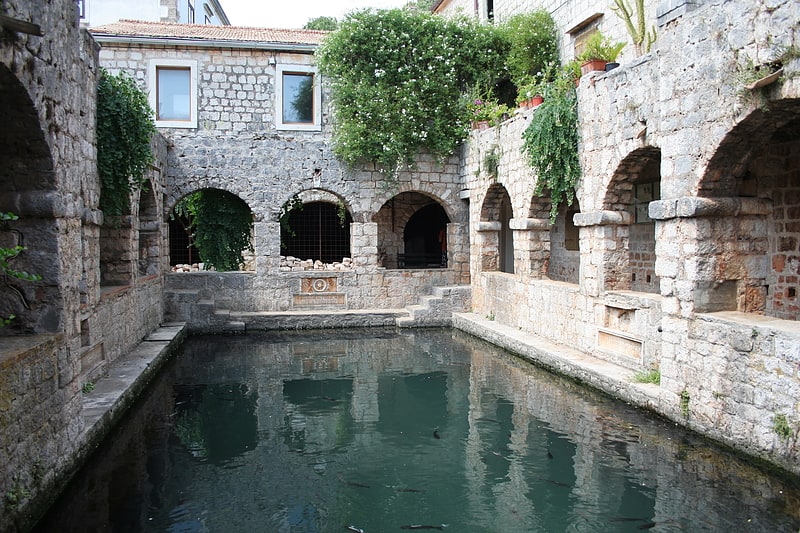
Also known as: Tvrdalj Petra Hektorovića u Starom Gradu
Fortress in Stari Grad, Croatia. Tvrdalj Castle is a castle in Stari Grad, on the island of Hvar, Croatia.
Tvrdalj was the summer residence of Petar Hektorović, the Croatian poet (1487–1572). During the 16th century, the island of Hvar came under attack from the Ottoman Turks. Hektorović, one of the local nobles, undertook to fortify his house so that it could act as shelter for the local citizens.
Tvrdalj is a well-preserved Renaissance building, with a long closed facade on the seaward side, to protect it from attack. The interior courtyard contains a sea-water fish pool, enclosed by a vaulted and arcaded terrace. Next to it is a tower with a dovecote. The living quarters, together with the servant quarters, and several wells, are arranged around the pool. Behind the main buildings is a walled garden where Hektorović cultivated herbs and medicinal plants.
A series of inscriptions are set into walls of the mansion in Latin and Croatian. Those in Croatian are considered to be some of the oldest extant.
PETRVS HECTOREVS MARINI FILIVS PROPRIO SVMPTV ET INDVSTRIA AD SVVM ET AMICOR, VSVM CONSTRVXIT
Translation: Petar Hektorović, son of Marin, built this at his own expense and by his own efforts, for his own and his friends' use.[34]
Osijek Archaeological Museum, Osijek
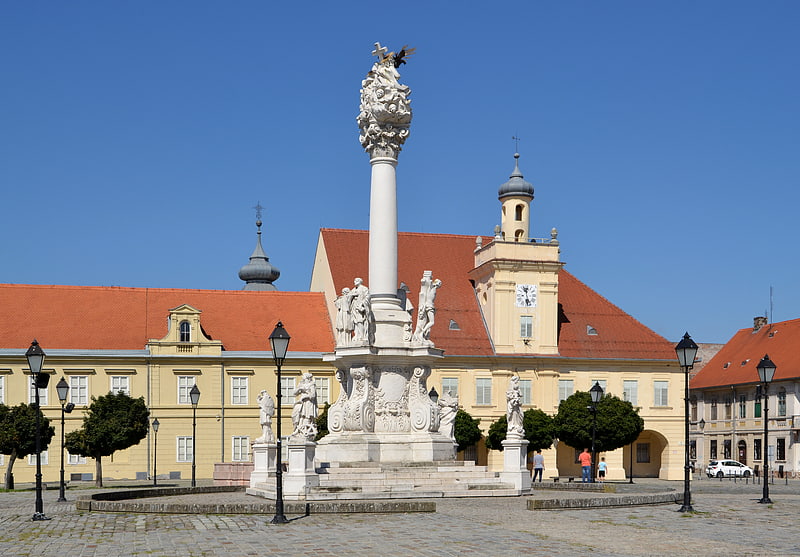
Also known as: Arheološki muzej Osijek
Museum. Osijek Archaeological Museum is an archaeological museum in Osijek, Croatia. It is located in Tvrđa.
It consists of two buildings: The City Guard and Brožan House.
The museum was established on 28 April 2005 by a decision of the Government of the Republic of Croatia.
It was opened on 16 November 2007, in a ceremony attended by Božo Biškupić, the Minister of Culture.[35]
Address: Trg Sv. Trojstva 2, 31000 Osijek
Makarska Co-cathedral, Makarska
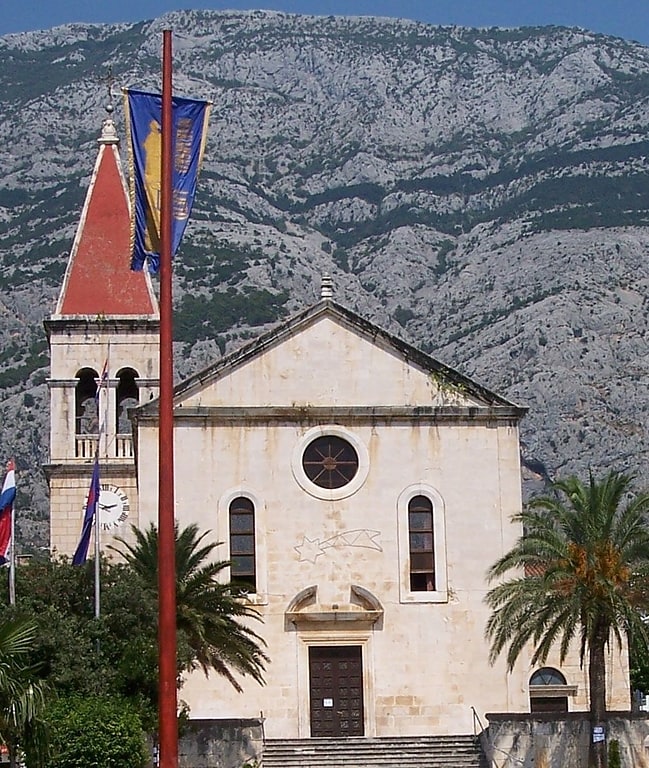
Also known as: Makarska konkatedrala sv. Marka
Cathedral in Makarska. Co-cathedral of St. Mark the Evangelist is a baroque church and former cathedral in the Archdiocese of Split-Makarska. It is located in the center of the town of Makarska, Croatia, on Andrija Kačić Miošić Square.
The former cathedral was built in the Baroque style in 1700 as the cathedral of the then diocese of Makarska at the initiative of the Bishop of Makarska, Nikola Bijanković, but was never completely finished. In 1756, the cathedral was consecrated by a later Bishop of Makarska, Stjepan Blašković. In 1828 Makarska diocese became part of the united Archdiocese of Split-Makarska, with the diocesan cathedral based in Split.
The façade, facing southwest, is decorated with two simple mullioned windows and a smaller Gothic-style oculus. On the right side from the entrance to the co-cathedral is the altar, which houses the bones of the patron saint of the city of Makarska and the diocese, St. Clement. The bones were brought to the co-cathedral from the Roman catacombs in 1725. On the left side from the entrance to the co-cathedral is the altar dedicated to Virgin Mary, and over it a small altar dedicated to Our Lady of the Rosary, decorated with the painting on wood of a Virgin and Child, painted by a master from the Byzantine school. The small altar, according to its locals, was built during the plague that hit Makarska in 1815. The second altar on the left is the altar of St. Cross. It is dedicated to the Calvary, and is decorated with the life-size wooden statues.
The Co-Cathedral was badly damaged during the large earthquake that hit Makarska in 1962. The renovation of the co-cathedral's interior changed its original appearance. The main altar, work of Venetian masters, was moved to the province Chapel of the Blessed Sacrament. Earthquake also damaged the choir. New organs, work of the Slovenian company Jenko, were installed in 1970.[36]
Address: Trg fra Andrije Kačića Miošića 5, 21300 Makarska
Upper Lakes, Plitvice Lakes National Park

Church of St. Dunat, Krk
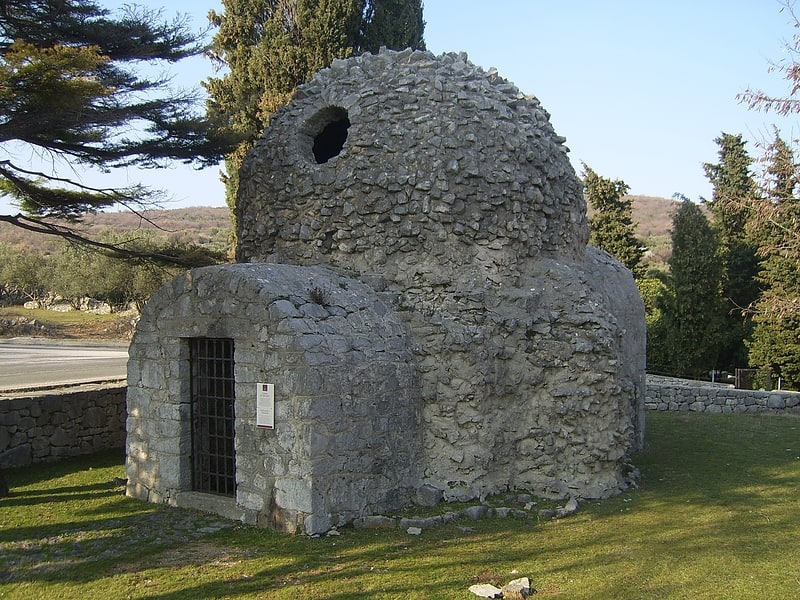
Also known as: Crkva sv. Dunata na Krku
Christian church in Kornić, Croatia. The Church of St. Dunat is a Roman Catholic church located on the island of Krk, Croatia.[37]
Dubovac Castle, Karlovac
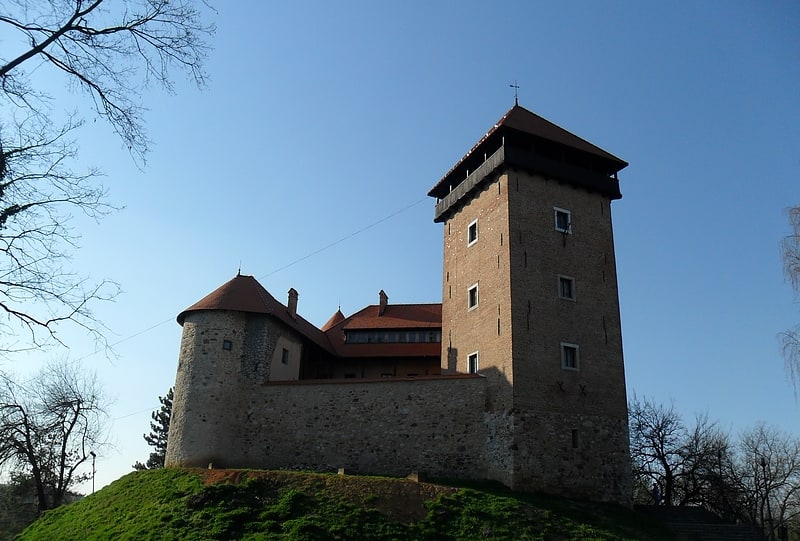
Also known as: Stari grad Dubovac
Castle in Karlovac, Croatia. Dubovac Castle is a castle in Karlovac, Croatia.
The Dubovac Castle overlooks the Croatian city Karlovac. Its square tower was probably built during the 13th century. In the 15th century, the castle was rebuilt in Renaissance style. The castle had various owners—from Slavonian nobleman family Sudar to famous Croatian counts and dukes Frankopan and Zrinski. From 1671 until 1809, the Dubovac was owned by the Karlovac generals. In 1837, a new owner, Count Laval Nugent, rebuilt the castle in the spirit of romanticism. Dubovac was once again renovated in 1952 in relation to graphics from the end of the 18th century." There is a photograph of the castle at that site.
The castle was used for several years recently as a hotel, and the damage done to the interior to accommodate rooms is now being repaired. There are museum exhibits and a large model of the countryside. Guide materials indicate that the fortress was built on a hill constructed by the people in order to maximize defenses and views of the surrounding areas.
The castle recently was featured on a commemorative Croatian postage stamp, complete with photograph.[38]
Address: Zagrad Gaj, 47000 Karlovac
Vučedol, Vukovar
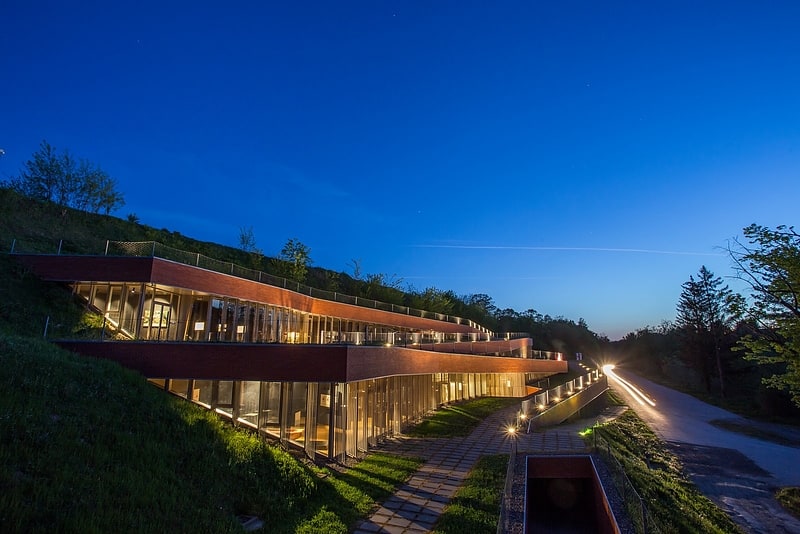
Vučedol Culture Museum is a museum of prehistory located at Vučedol, near the city of Vukovar, Croatia. The significance of the site as the eponym of the Vučedol culture makes it an important archaeological park in this part of Europe.[39]
Address: Vuchedol 252, 32000 Vukovar
Eltz Manor, Vukovar
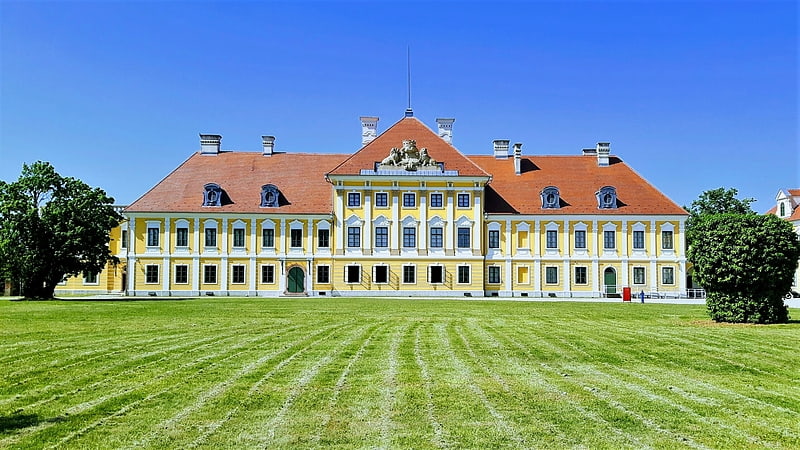
Also known as: Dvorac Eltz u Vukovaru
Palace in Vukovar, Croatia. Eltz Manor is a Baroque palace in Vukovar, Croatia. The 18th-century manor is the location of the Vukovar City Museum. The manor, as it previously appeared, is depicted on the reverse of the Croatian 20 kuna banknote, issued in 1993 and 2001. The palace was destroyed in 1991 in the Croatian War of Independence. However, after four years of restorations, it was completely restored to its pre-war appearance in October 2011.[40]
Stara Gavza, Cres

Beach
Maiden and the seagull, Opatija
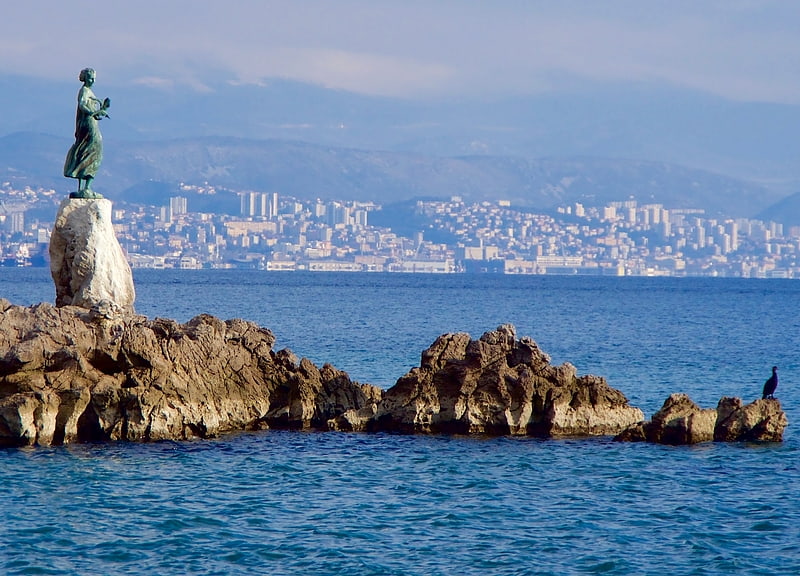
Top attraction, Monuments and statues
Church of St. Stephen, Stari Grad
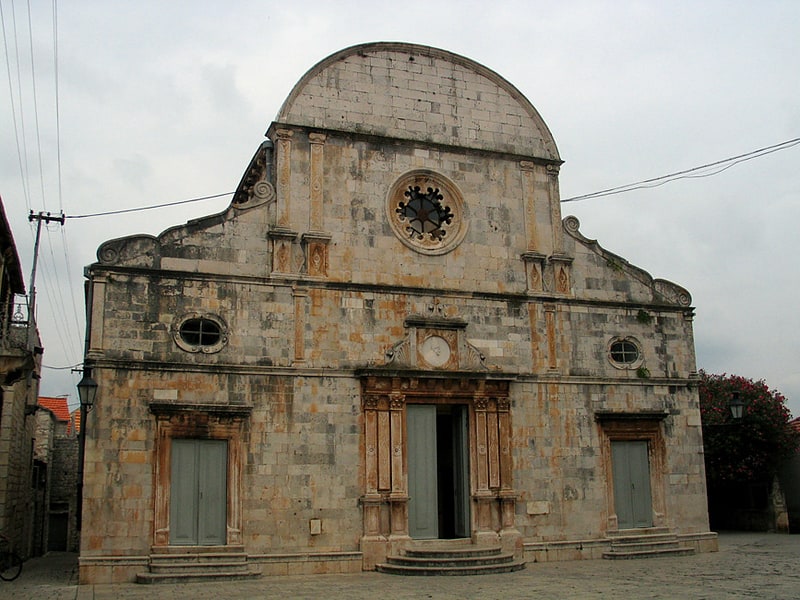
Also known as: Crkva sv. Stjepana u Starom Gradu
The Church of St. Stephen is the parish church of Stari Grad on the island of Hvar in Croatia. It is dedicated to the martyred Pope Stephen I. It stands on the eastern side of a small square, Trg sv. Stjepana, in the historical centre of Stari Grad.[41]
Lake Vrana, Cres
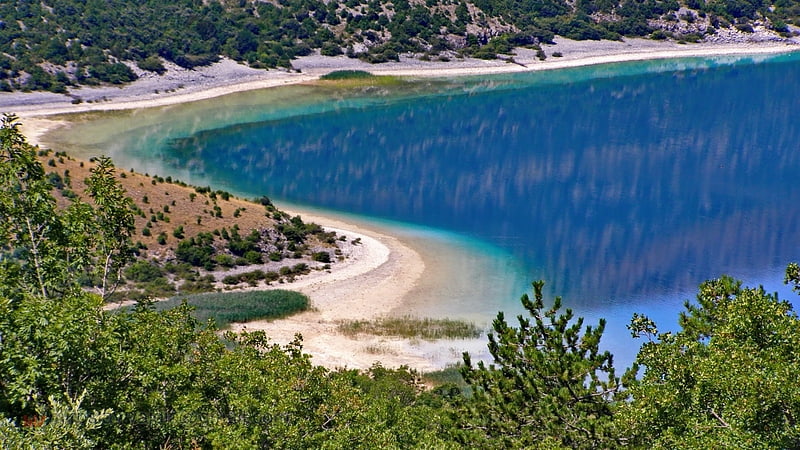
Also known as: Vransko jezero
Lake in Croatia. Lake Vrana, in the centre of Cres island, is a fresh water lake, 1.5 kilometres wide and about 4.8 kilometres long. The town of Cres has been supplied with drinking water from the lake since 1953, and the towns of Mali and Veli Lošinj received their supplies ten years later. It was thought at one time that the water in the lake was linked to some mainland source by underground streams, but it has since been established that in fact it originates from the atmosphere.[42]